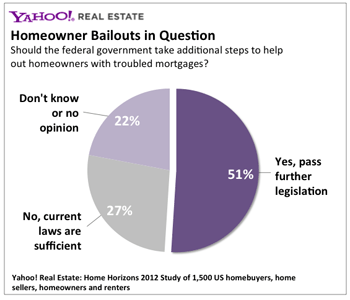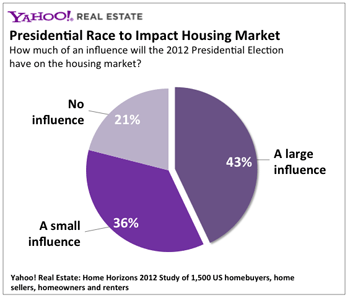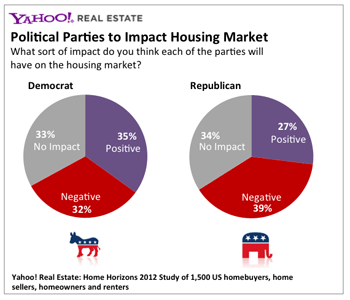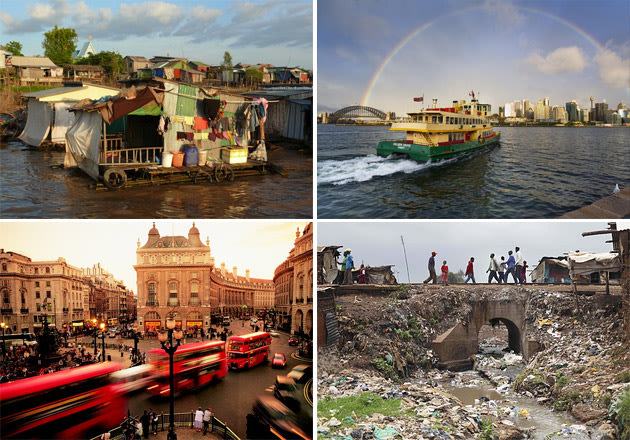Tuesday, December 20, 2011
Ekaterina Rybolovleva House !!! Ekaterina Rybolovleva Home !!! Ekaterina Rybolovleva House !!! Billionaire's Daughter Pays Record Sum for NYC Pad
Now comes news that Ekaterina Rybolovleva, the 22-year-old daughter of Russian billionaire Dmitriy Rybolovlev, is buying the condominium. Rybolovleva is currently studying at an undisclosed U.S. university and plans to stay in the apartment when visiting New York. According to a source familiar with the sale, she paid the full asking price of $88 million, setting a record for highest individual transaction in New York City history.
Here is the official statement from her representatives:
A company associated with Ekaterina Rybolovleva, daughter of a well-known businessman Dmitriy Rybolovlev, has signed a contract to purchase an apartment at 15 Central Park West, New York. The apartment is a condominium currently owned by the Sanford Weill Family.
Ms. Rybolovleva is currently studying at a US university. She plans to stay in the apartment when visiting New York. Ms. Rybolovleva was born in Russia, is a resident of Monaco and has resided in Monaco and Switzerland for the past 15 years.”
The apartment, in one of the toniest post-war buildings in Manhattan, has 10 rooms including 4 bedrooms, a wraparound terrace of more than 2,000 sq. feet, 4 bedrooms and 2 wood burning fireplaces.
[See also: Homes With Kitchens Worthy of Professional Chefs]
“This sale is an outlier. It works out to be about $13,000 per sq. foot, the highest on record, for anything, that has ever occurred,” says Jonathan Miller, chief executive of real estate appraiser Miller Samuel, “What is ironic is that when Sandy Weill bought it for less than half this amount, he paid the highest price per sq foot to date in that building, around, $6,400 per sq. foot. He is again setting a record.”
The previous New York City record had been set back before the market crash when investor Christopher Flowers paid $53 million for a townhouse at 4 east 75th Street. He resold the property on August 15 for just over $36 million.
There were two other very notable sales in the city this year. Russian composer Igor Krutoy paid a record $48 million for a condo at the Plaza in March, and a townhouse at 16 East 69th Street sold for $48 million in July.
Rybolovleva is the second daughter of a billionaire to make huge real estate news this year. Back in July, heiress Petra Ecclestone, daughter of UK Formula One billionaire Bernie Ecclestone, apparently paid $85 million for Spelling Manor, the 56,500-square foot mansion that was previously owned by Candy Spelling, widow of famed TV producer Aaron Spelling, whose works include the “Beverly Hills 90210,” “Charlie’s Angels,” and “Dynasty” series.
Rybolovleva’s father Dmitriy sold the majority of his stake in Uralkali, the fertilizer business that made him rich, for $6.5 billion in 2010. He is already known in U.S. real estate circles for his May 2008 purchase of Donald Trump’s Palm Beach mansion, Maison de L’Amitie. He paid $95 million in cash for that residence, $25 million less than what Trump had originally asked. It was apparently the largest single residence price concession of all time. He may not own that house much longer though. His wife Elena, who filed for divorce in Pam Beach court in 2009, is seeking transfer of ownership of the former Trump mansion. He himself spends much of his time at his home in Monaco and is likely to buy the struggling French football club, AS Monaco.
Wednesday, December 14, 2011
Beyonce Home !!! Beyonce House Miami !! BEYONCE Takes HUGE Loss on TINY Miami Beach Pad

Beyonce Knowles just got her pregnant ass handed to her in the real estate market... selling off her swanky beachfront Miami property for 75% LESS than she bought it for ... TMZ has learned.
According to public records, Beyonce dropped $465,000 on a tiny cabana in a glitzy Miami condo complex back in 2002 -- it only measured 190 square feet ... and contained one 1/2 bathroom.
The place is basically a small little beachfront room, from which Beyonce could walk to and from the sand and the pool.
It's highly likely Beyonce owned a bigger condo in the complex ... and used the cabana so she could change and use her own private restroom without having to schlep all the way back through the building.
But that was BEFORE November 9th ... when B sold the cabana for $110,000 ... a tad below her $135,000 asking price ... and $355,000 LESS than she paid for it.
Tough loss ... but we're guessing she'll be able to get by somehow.
We called Beyonce for comment -- so far, no response.
36 Gifts for the Home Recommended by Consumer Reports
 Play Video
Play VideoVideo: Gift-Giving on a BudgetFinancially Fit 3:06 | 1268 views
Despite all the ads and hoopla, not everybody wants an iGadget, shiny bauble or flat-screen TV for the holidays. Some people on your list might fancy new kitchen gear or another product that makes life around the house more enjoyable such as a coffeemaker that brews terrific coffee or a stand mixer that kneads bread dough. And any handyman will appreciate a beefy cordless drill.
Here are 36 small appliances and other home products that scored highly in our tests and that are recommended by Consumer Reports.
Blenders
•The Ninja Master Prep Professional QB1004 ($60) is a CR Best Buy and this isn’t the first time we’ve touted its excellent ability to crush ice and make icy drinks. It excelled at our durability test in which we conduct the ice crush test 45 times and very good at such as other tasks as puréeing soup and shredding cheese.
•The Vita-Mix 5200 ($450) aced Consumer Reports tests for icy drinks, ice crush, durability, and such other tasks as shredding and puréeing—and at that price it should. It was very convenient although a bit noisier than the Ninja and the L’Equip.
•The L’Equip 228 ($160) was also excellent at crushing ice, shredding and puréeing and was judged very durable. It was also very good at making icy drinks but not as convenient to use and clean as the other two.
•The Miallegro Professional MiTutto 9090 immersion blender ($70) is lightweight and versatile and a CR Best Buy. The handheld blender puréed soups, blended smoothies, whisked egg whites, grated cheese, and chopped onions and other foods better than more expensive versions in our tests. The metal parts detach for easy cleaning.
Coffeemakers
•The Mr. Coffee BVMC-SJX33GT ($40) is superb at brewing coffee and the conventional drip machine makes up to 12 cups. It’s programmable and allows you to adjust the brew strength, so you get just the jolt of joe you like.
•The Hamilton Beach BrewStation 47454 ($80) brew and dispense machine has excellent brew performance, is convenient and was judged excellent overall.
•The Senseo Supreme SL7832 ($130), a pod-style coffeemaker, was excellent at repeat speed and cup size consistency and very good at brewing range, temperature consistency, convenience and first-cup speed.
Cookware
•The Bonjour Stainless Steel ($540) 10-piece set was excellent at handle sturdiness, very good at cooking evenness and good at handle comfort, handle safety and ease of cleaning. The uncoated Bonjour set also worked well with induction cooktops and ranges. It’s dishwasher safe and oven safe to 500 degrees F.
•The Emerilware ($200) nonstick cookware comes in a 10-piece set made of hard anodized aluminium. The pans were excellent at cooking evenness and easy to clean. Handle safety was very good and the nonstick coating was durable.
Cordless Drills
•The Craftsman 17310 ($100) offers impressive power and speed. Compact, well balanced and lightweight, this cordless drill’s two-speed gearbox allows for slower speeds when driving screws, and the 24-position adjustable torque clutch offers ample flexibility. It comes with a lithium-ion battery that can be recharged in 30 minutes and an LED work light. It’s a CR Best Buy.
•The Craftsman 17586 ($70), another CR Best Buy, has a 3/8-inch chuck and two speed ranges. It comes with one Li-ion battery, a smart charger, and an LED work light. This 12-volt model is a good choice for quick, easy jobs, but not suited to heavy-duty tasks. It’s compact and lightweight for easy handling, with a fast 30-minute battery recharge time.
•The Hitachi DS18DSAL ($170) has a 1/2-inch chuck and two speed ranges. The 18-volt model comes with two Li-ion batteries, a smart charger, and a flashlight. This top-rated Hitachi is very fast and powerful, yet is lightweight and has a particularly comfortable handle. The price makes it a value over other high-performing name-brand drills. Fast and powerful, with easy handling and 40-minute recharge.
Food Processors
•The Cuisinart DFP-14BCN ($200) was very good in overall performance and has a special wide feed tube that can accommodate large items. The 14-cup machine was very good at chopping, slicing, grating, shredding and puréeing and not too noisy.
•The KitchenAid KFP715[WH] ($100) was even quieter. The 7-cup processor was excellent at slicing and very good at shredding, chopping and puréeing.
•The Cuisinart DLC-2011CHB ($200), like its brandmate, was very good at chopping, slicing, grating, shredding and puréeing and not too noisy. It has a capacity of 11 cups.
Knives
•The Ginsu Chikara ($75) a CR Best Buy costs hundreds less than other picks and delivers the same excellent cutting performance. The eight-piece Ginsu Chikara is as good a starter set as any we tested. What's more, the Ginsu includes a santoku knife, an increasingly popular cross between a chef's knife and a cleaver.
•The Zwilling J.A. Henckels Twin Professional “S” set ($290) was best overall in our tests combining razor sharp blades and an ergonomic design in its seven-piece set. It was excellent at cutting and handle comfort and very good at handle balance.
•The Kershaw Shun Classic DMS300 ($270) three-piece set was excellent at cutting and very good at handle comfort and balance. But it’s missing a santoku and a slicer.
Hand Mixers
•The KitchenAid Architect Series KHM920A[CS] ($80) hand mixer exhibited very good whipping time, was excellent at mixing cookie dough and is capable of mixing small quantities of dough using dough hooks. It was also pretty quiet but if you need a mixer with interchangeable beaters, this one’s not for you.
•The Cooks 10-Speed HM820 (JCPenney) ($30) was excellent at whipping time and mixing cookie dough and also sturdy enough to mix small quantities of dough using dough hooks.
•The KitchenAid Ultra Power 5 KHM5AP[WH] ($50), like its brandmate, was excellent at mixing cookie dough and is capable of mixing small quantities of dough using dough hooks. But it was only good at whipping time and the beaters are not interchangeable.
Stand Mixers
•The KitchenAid Classic K45SS[WH] ($200) lives up to its name. It was excellent at whipping time, kneading and mixing and very good at convenience without too much noise. It’s a CR Best Buy.
•The KitchenAid KSM450[ER] ($250) sold at Sears—check out the red one—was also excellent at whipping time, mixing and kneading, was just as convenient and, again, pretty quiet.
•The Hamilton Beach Eclectrics 6322[1] ($180) stand mixer is another CR Best Buy. It was excellent at whipping time and mixing and very good at kneading and convenience. It’s also quieter than the other two on this list.
Sewing Machines
•The Brother Innov-is 40 ($400), an electronic/computerized machine, is a CR Best Buy. Our test panel thought the Brother was easy to use and ergonomic in its design. Sewing performance was very good—all machines are given technical evaluations on sewing seams, stitch types, button holes, hems, zippers insertion, including sewing on a variety of fabric types and weights.
•The Pfaff Select 3.0 ($800) was also very good at sewing performance. Our testers thought it was easy to use and comfortable too.
•The Bernina Activa 230PE ($1,350), another electronic/computerized model excelled at all the tasks that combine to add up to great sewing performance. Ease of use and ergonomics were very good.
Steam Irons
•The Singer Expert Finish EF ($60) excelled at our ironing tests which include the ironing of silk, cotton-poly, wool blend and linen. In our tests we also iron a linen table cloth, check the thermostat set point and measure the temperature swing. The steaming rate, which is measured over a period of 10 minutes, was excellent and the iron is easy to use with clear markings and settings. It’s a CR Best Buy as are the other two irons we recommend here.
•The Kenmore 80598 ($75) excelled at the steaming rate test but was not quite as good as the Singer at ironing various fabrics. However, the controls and settings were easy to use.
•The Rowenta Focus DZ5080 ($75) excelled at the two most important tests—steaming rate and ironing fabric. It was very good at ease of use but does not have a digital display.
Toaster Ovens
•The Oster TSSTTVMNDG toaster oven ($80) delivered fine baking, broiling and toasting, and can roast a four-pound chicken. It has convection cooking, which uses a fan to distribute heat evenly, but our tests found that the convection didn’t improve baking. The Oster was good at making toast the way you want it and was easy to clean.
•The Breville Smart Oven BOV800XL ($250) was very good in overall performance and was very good at toasting, baking and broiling. It excelled at toasting both full batches and successive batches and has controls that are easy to set. The Smart Oven has a convection oven that can accommodate a four-pound chicken.
•The Breville BOV650XL ($180) was better at toasting one slice of bread than its brandmate but was not quite as good at full and successive batches and doesn’t have a convection oven. Still, you can cook a small chicken in it. The toaster oven was very good at toasting, baking and broiling. The toast shade setting is a timer and is less convenient to use than others in our tests.
Water Filters (Carafe Style)
•The Tersano Lotus LWT-1000 ($229) was excellent at removing lead and chloroform. The flow was also excellent and the filter retained its flow rate over time, which means it didn’t clog. An indicator lets you know when it’s time to change the filter.
•The Clear2O CWS100A ($15) is a CR Best Buy. It was excellent at lead and chloroform removal and had a steady flow rate. It was very good at not clogging.
•The ZeroWater Z-Pitcher ($35) was very good at lead removal, flow rate and not clogging but was not equipped to remove chloroform.
Yahoo! Study: Homeowners Want Political Action
On the brink of a Presidential Election year, a majority of American adults believe that the federal government should do more to assist homeowners, many of whom have troubled mortgages or are teetering on foreclosure or bankruptcy.
That’s a key finding of a Yahoo! Real Estate survey of 1,500 current and aspiring homeowners, fielded in October. The study, known as Home Horizons 2012, was mapped to the U.S. adult population of homeowners and renters.
 |
Altogether, 51% of American adults agree that the government should do more to rescue homeowners at risk of losing their mortgage, while 27% disagree and 22% don’t have an opinion. Among those with opinions on the matter, about two-thirds believe the government should offer additional assistance such as low-cost loans.
The study also finds that four out of five adults believe that the 2012 Presidential Election will have either a small or large influence on the housing market. Altogether, 43% of respondents believe that the national election will have a large influence on the housing market.
Neither major political party fares especially well in the study with regard to perceptions of the impact that either may make on the troubled housing market. One third of respondents said neither party would make either a positive or negative impact on the housing market.
 |
However, more adult respondents stated that Republicans’ impact on the housing market would be negative, at 39%, edging the Democrats’ negative numbers at 32%. Accordingly, Democrats’ also scored higher positive numbers, 35% to the Republicans’ 27%.
With 11 months left until national elections, the troubled housing market is not front-and-center either in Republican debates or in Obama administration talking points. Congress, obsessed with budget deficits, appears to be experiencing bailout fatigue.
Seeking Help
Meanwhile, the housing crisis is still grim in some areas, particularly where high unemployment is the status quo. Although housing prices have stabilized in many parts of the country, it’s also true that home prices are still sinking in many cities such as Las Vegas, Nev., putting significant pressure on homeowners with negative equity.
 |
The National Association of Realtors (NAR), a powerful industry trade group, favors government intervention. “Helping even more families stay current on their mortgage and remain in their homes will continue to reduce the negative impact of foreclosures on families and communities and aid in the recovery,” a spokeswoman told Yahoo! Real Estate.
According to Stan Humphries, Chief Economist at Zillow, “28.6% of single-family homes with mortgages are in a negative equity position. That’s about 15 or 16 million,” mortgages that may need assistance. But, he adds, “There’s no silver bullet to knock out negative equity.”
Humphries favors “options that keep the current owner in the house.” To that end, he contends that private investors have options that Fannie Mae and Freddie Mac might not be able to implement such as principle write-downs, renegotiating the terms of a mortgage to a lower rate, or in some cases renting out a house to current owner directly.”
What’s in Place
To date, the federal government has enacted two key laws to help homeowners with troubled mortgages refinance to more manageable payments:
- The Home Affordable Foreclosure Avoidance Program (HAFA) is designed to help streamline the short-sale process; and
- The Home Affordable Refinance Program (HARP) helps underwater homeowners avoid foreclosure by refinancing their mortgage to make it more affordable. But, the recently revised HARP 2 is only available for refinances of Fannie Mae and Freddie Mac held loans, according to NAR.
Is the program working effectively? Since 2008 there have been 4.02 million foreclosure sales, according to LPS Applied Analytics, but another eight million home mortgages are at risk according to a recent Bank of America report.
Still, through the third quarter of this year, the Federal Finance Housing Agency reports that it has “completed nearly 2 million foreclosure prevention actions,” of which “nearly 1.7 million … have allowed borrowers to retain homeownership, with more than one million being permanent loan modifications.”
But not everyone is happy about it. “The situation would be much worse if none of those programs or efforts had been tried,” contends Bruce Hahn, president of the Grassroots Alliance, an advocacy group in Arlington, Va. “But we still have an extremely serious problem. We need something more dramatic – a game changer.”
No Bottom Yet
Housing could take on a larger role in the 2012 national political debate if potential voters such as Bonnie, a renter in Kansas City, Mo., who is not in the market to buy a home, makes her voice heard. “I think homeowners should have a chance to keep their home, like lower payments etc.,” she says. “No one should be homeless or have to live in their cars. After all, we're supposed to be a rich country. We send money to other countries and that's okay, but I believe charity begins at home.”
Despite the passions of the electorate, there is no consensus political solution to the mortgage crisis. “A large-scale government policy that’s going to fix all of this – no one has seen such a thing,” says Zillow’s Humphries. “Stabilization in home prices and then a slow upward movement in prices to work down negative equity – that’s a multiyear affair.”
And homeowner bailouts may not appeal to the mortgage industry. “You’ve had many programs put in place to curb foreclosures and they really haven’t worked,” said Michelle Meyer, a senior economist at Bank of America Merrill Lynch, appearing as a guest on a Bloomberg program earlier this month. “You have a serious problem in the housing market that just needs to be worked out over time.”
Meyer sees no housing recovery on the horizon: “It will be hard for prices not to fall further – I would say another 5% decline from here on a national basis.” Paradoxically, if Meyer’s pessimistic forecast comes true, many more homeowners will demand mortgage relief programs from the federal government in 2012.
Though a thriving housing market recovery would appear to serve everyone’s interests, there are competing views about how to reverse the fortunes of this vital industry. Political solutions may be hard to come by, especially in an election year in which the presidency and possession of both houses of Congress are at stake.
The World's Happiest (And Saddest) Countries

Whatever happiness is to you, there’s some conditions under which it most readily blossoms. You need enough money to acquire a puppy or a gun, and enough free time to exalt in its warmth. You need the peace of mind that Big Brother isn’t about to come around the corner and take your gun (or puppy) away from you. And because fun things are even more fun when shared with others, you’ll be even happier if you have a family that encourages your passion, or at least a local chapter of the NRA or Kennel Club to hang out with.
The World’s Happiest Countries
A few years ago the directors of the Legatum Institute (part of billionaire Christopher Chandler‘sDubai-based Legatum Group) were thinking about the wealth of nations. “We found ourselves asking two questions,” says spokesman Julian Knapp. “First, why have some nations — given a similar start — become more successful and wealthier than others? And having recognized that life is about more than simple material satisfaction, the second question: why are some nations happier and more satisfied than others?” Indeed why had Ghana and South Korean, having shared similar GDP’s in the 1950s, gone in such different directions, with Korea’s now $39,000 per capita and Ghana’s just $3,000.
After studying 40 years of data and outcomes, they settled on eight areas – the ingredients of prosperity: economy, entrepreneurship, governance, education, health, safety, personal freedom andsocial capital. Then they looked for reliable data from the likes of the Gallup polling organization that would let them rank countries on their performance in these areas. Add up the scores and you get the Legatum Prosperity Index.
In its recently released 2011 index, billed as an “inquiry into global wealth and well being,” Legatum ranks 110 countries on their overall level of prosperity. These countries comprise 93% of global population and 97% of GDP.
At No. 1 for the third year in a row: Norway. What’s it got that the rest of the world doesn’t? For one thing, a stunning per capita GDP of $54,000 a year. Norwegians have the second-highest level of satisfaction with their standards of living: 95% say they are satisfied with the freedom to choose the direction of their lives; an unparalleled 74% say other people can be trusted.
Cynics say Norway’s ranking is a fluke, that it’s a boring, godless (just 13% go to church), homogeneous place to live, with a massive welfare state bankrolled by high taxes. Without massive offshore reserves of oil and gas that it exports to the world through state-controlled Statoil, Norway’s GDP would be far smaller.
Natural resources help: Australia, which ranks third, is benefitting greatly from selling its coal, iron and natural gas to China. And yet some of the most resource-reliant nations, like Kuwait and the United Arab Emirates, are far down the list. There’s clearly more to it than oil and ore. JoiningNorway and Australia in the top 10 are their neighbors Denmark, Finland, Sweden and New Zealand. Equally small and civilized Switzerland and the Netherlands are also up there. Rounding out the top 10 is the United States at 10th and Canada (sixth).
What do these nations have in common? They are electoral democracies, for one. People are naturally happier when they feel like they have a say in how their countries are run. They also have abundant civil liberties (consider decriminalized drugs and prostitution in the Netherlands), though if your happiness is a warm gun you’ll be happier in the U.S. than in Europe. There are few restrictions on the flow of capital or of labor. Legatum’s scholars point out that Denmark (No. 2), for example, has little job protection, but generous unemployment benefits. So business owners can keep the right number of workers, while workers can have a safety net while they muck around looking for that fulfilling job.
Legatum’s researchers note that Australia’s rise from fifth in 2009 to third place exemplifies these positive traits. The Aussies have abolished trade protections, freed labor markets, reformed strict immigration laws and become one of the world’s most flexible economies.
Of perhaps utmost importance, nearly all the nations in the top 10 are adept at fostering entrepreneurship and opportunity. Legatum’s researchers concluded that a country’s ranking in this area is the clearest proxy of its overall ranking in the index. This means low business startup costs, lots of cellphones, plenty of secure Internet servers, a history of high R&D spending and the perception that working hard gets you ahead. The U.S. stands out with a fifth-place rank in entrepreneurism and first place in health, thanks to the world’s highest level of health spending, great vaccination levels, clean water, plentiful food and beautiful scenery.
It’s worth noting that there are some countries plagued by autocrats or natural disasters that don’t show up on the list. Burma, Cuba and North Korea don’t allow pollsters in to survey citizens. Other restive countries where sufficient data was unavailable are Libya, Iraq, Afghanistan, Somalia andHaiti.
Perhaps the biggest disappointment in the three years of the Legatum Index is India. Since 2009 it has dropped 13 spots to 91st place. Per capita GDP is low at $3,600. Health care is extremely poor with high malnourishment and infant mortality and low vaccination rates. It lags in education with a literacy rate of 64%. In social capital, India ranks 104th; only 60% say they can rely on family or friends in a time of need. Only 21% find other people trustworthy. Social inequality perpetuated by a caste system means low levels of entrepreneurship and opportunity.
India might well wish it had Europe’s problems. Yet although Europe holds 14 of the top 20 slots in the index, not all is peachy. Ireland and Belgium have sagged two spots in the rankings since 2009;Italy and Greece are down four spots. Citizens in a number of European countries expressed flagging confidence in their governments as parliamentary power over economic decisions has been ceded toBrussels. Legatum’s researchers also noted surprise at a drop in personal freedom rankings in Finland and Sweden, which show slightly less tolerance for immigrants and minorities. Expect worse results for Europe next year.
It’s important to note that prosperity/happiness is not a zero-sum game; every country can improve simultaneously. Legatum notes that during the past three years scores have increased for 87 of 110 countries even if their overall ranking hasn’t risen at all. For instance, the more cell phones and Internet connectivity a country has the more opportunities they have to create networks. According to Legatum’s report, we all get more out of Facebook and Twitter than we realize: “Social networks are an asset that produces economic and wellbeing returns.”
For the most beleaguered countries, every little bit matters. An extra thousand dollars a year of income might not mean a lot to a Norwegian, but in the Central African Republic, where the average person gets by on $2 a day, it’s huge. Happiness there isn’t a puppy or a warm gun, it’s not having to bury your newborn before his first birthday.
Click the next page to see the 5 happiest and 5 unhappiest countries.
The 5 happiest countries:

Sweden (Photo courtesy of Chad Ehlers Stock Connection Worldwide/Newscom)

New Zealand (Photo courtesy of AP Photo/Junji Kurokawa)
New Zealand ranks no. 2 in governance, education and personal freedom. No country ranks higher in tolerance for immigrants. (Image of artist Grand Hughes, Napier, N.Z.).

(Photo courtesy of Andrew Peacock/Lonely Planet Images/Newscom)
Australia has moved up from fifth place in 2009, the result of excellent education, an efficient government bureaucracy and booming trade in natural resources.

Denmark (Photo courtesy of Inti St. Clair/Getty Images)
Denmark is no. 2 for the third year. The tiny country ranks first in entrepreneurship and opportunity, based on high levels of social equality, high connectivity and the world's lowest start-up costs.

Norway (Photo courtesy of Hugh Sitton/Getty Images)
For the third year, Norway ranked no. 1. With per capita GDP of $54,000 it is among the richest in the world and ranks first in social capital and second in safety and security.
The 5 saddest countries:

Yemen (Photo courtesy of Mohammed Huwais/AFP/Getty Images)
Civil unrest, few liberties, little education for girls. Only a third report any form of employment.

Pakistan (Photo courtesy of AP Photo/B.K.Bangash)
Ineffective, unstable government. Very dangerous, intolerant of outsiders.

Ethiopia (Photo courtesy of Tom Cockrem Lonely Planet Images/Newscom)
Literacy is just 30%; undernourishment 40%; unemployment rate 20%.

Zimbabwe (Photo courtesy of AP Photo/Tsvangirayi Mukwazhi)
Inept, corrupt, kleptocracy. No civil rights. Pervasive political violence.

Central African Republic (Photo courtesy of AP Photo/Schalk van Zuydam)
The worst. More than 10% of children die in their first year. Classes average 91 students per teacher. No foundation for future growth.
My Blog List
-
Richest Rappers 2011-Forbes Wealthiest Hip Hop Artists: Mohammed Al Amoudi - Ethiopian billionaire wins libel action in UK An Ethiopian-born billionaire has won £175,000 in libel damages over allegations he had hunted his daughter d...9 years ago
-
Gayton McKenzie South African MultiMillionare Businessman,Motivational Speaker, Former Bank Robber !!! - Kenny Kunene and Gayton McKenzie Picture Gayton McKenzie Gayton McKenzie is a South African motivational speaker who came to public attention in 2002 w...9 years ago
-
ZBC boss was earning a salary and allowances of nearly US$40 000 per month while other workers went for more than six months without pay - [image: HAPPISON MUCHECHETERE] Happison Muchechetere The chief executive of the Zimbabwe Broadcasting Corporation Mr Happison Muchechetere, who is on leave...11 years ago
-
Aliko Dangote and Standard Bank mark their leadership atAABLA - Published: 24 October 2011 Captains of Industry from across Africa gathered in one room on Thursday, 20 October to attend the inaugural *All Africa Busines...13 years ago



